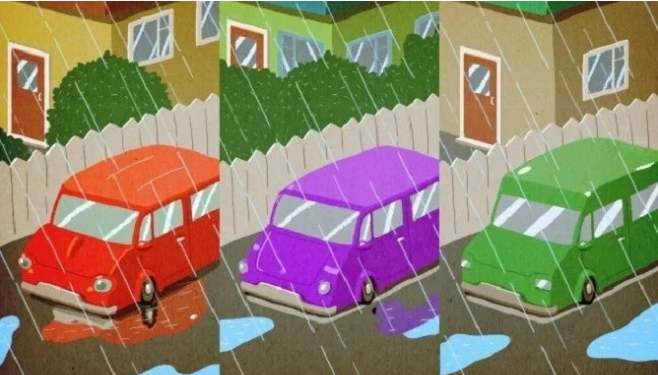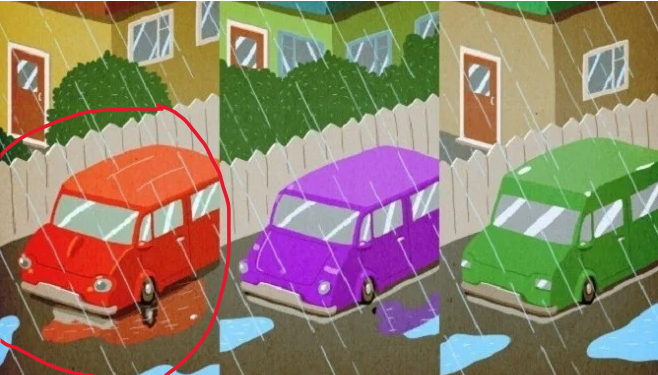Puzzles have a unique way of capturing our attention, challenging us to think critically and notice the smallest details. The scenario of three neighbors—each claiming to have been home during a robbery—offers just such a challenge. The burning question is: Which neighbor is lying? Let’s dive into the details and solve this intriguing mystery.
Why Do People Struggle with This Puzzle?

This puzzle may seem straightforward at first, but it’s easy to fall into traps. Here’s why many people get stuck:
- Overlooking Environmental Clues: The setting, such as weather conditions or objects in the scene, often contains critical hints that go unnoticed.
- Jumping to Conclusions: Rushing to an answer without fully analyzing the evidence leads to incorrect assumptions.
- Focusing on Irrelevant Details: Some may fixate on aspects like the car colors instead of identifying what really matters.
The solution requires a sharp eye and a logical approach to decipher the clues.
Step-by-Step Guide to Solving the Puzzle
To identify the liar, we need to analyze the scene systematically.
Step 1: Observe the Overall Setting
The first clue lies in the environment. It’s raining heavily, as shown by the rain falling and the presence of puddles on the ground. Three cars—a red one, a purple one, and a green one—are parked in front of the houses. While the rain is consistent, something peculiar stands out in how the water interacts with the cars.
Step 2: Examine the Puddles Beneath the Cars
The puddles under the cars provide the critical evidence:
- Purple Car: There’s no puddle beneath the purple car. This suggests it was parked before the rain started, and any water displacement has long since evened out.
- Green Car: Similarly, there’s no puddle beneath the green car. This indicates it has been stationary during the rain as well.
- Red Car: A fresh puddle is visible beneath the red car. This indicates that the red car arrived after the rain began, as the displaced water created a visible puddle.
Step 3: Interpret the Evidence
Now, let’s put the observations together:
- The purple and green cars have no puddles, showing they were parked before the rain started.
- The red car has a puddle, proving it arrived after the rain began.
If the owner of the red car claims to have been home the entire time, their story doesn’t add up. The rain and the fresh puddle expose their lie.
Step 4: Identify the Liar

Based on the evidence, the owner of the red car is lying. Their car’s arrival during the rain contradicts their claim of being home when the robbery occurred.
Why Details Matter in Solving Puzzles
This puzzle demonstrates how the smallest details can reveal the truth. It’s a classic case of observing beyond the obvious and considering the context. Here’s what it teaches us:
- Pay Attention to Context: External factors, like weather conditions, can be key to solving a puzzle.
- Look for Subtle Clues: Something as minor as the presence or absence of a puddle can make all the difference.
- Avoid Assumptions: Jumping to conclusions without fully analyzing the evidence often leads to mistakes.
Critical thinking and a keen eye for detail are essential skills when tackling puzzles like this one.
How Did You Do?
Now that we’ve solved the puzzle, it’s time to reflect. Did you identify the liar on your first try? Did you notice the puddles right away, or were you distracted by other details? Every attempt, whether correct or not, is an opportunity to improve your observation and reasoning skills.
Conclusion: A Test of Observation and Logic
The robbery puzzle challenges us to think critically and focus on the details. By carefully observing the environment and interpreting the evidence, we can uncover the truth. The owner of the red car, whose arrival during the rain betrayed their lie, reminds us that even the smallest clues matter.
Puzzles like this aren’t just entertaining—they’re a great way to sharpen your mind. So, keep challenging yourself with more mysteries and brainteasers. Who knows? With practice, you might just become the next great puzzle-solving detective!


